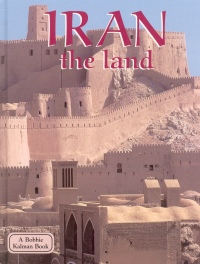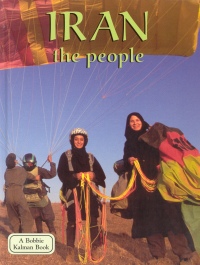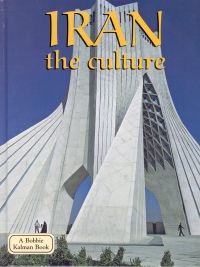| ________________
CM . . .
. Volume XII Number 4 . . . .October 14, 2005
excerpt:
This trio of books about Iran is part of the "Lands, Peoples, and Cultures" series from Crabtree Publishing, a publishing house which has published similar books about more than 30 countries. Each book in the series has enough repetition from the other titles to provide a broad range of information, yet concentrates on its specific topic so as to be informative for research purposes. Iran is a country in the news for many reasons, but North American children who are interested in researching about it may not know about its history, geography and its people. Each of these books examines these topics in two-page spreads which are further subdivided into one or two paragraph explanations. Each section has brilliantly coloured and well-shot photographs which are accompanied by informative captions. Glossaries at the back of the books offer explanations of terms and indexes provide useful direction. Iran: The Land describes the varied geography and climate of Iran and how people live within those conditions—from mountains to deserts, from fertile lowlands to barren wastelands, from the modern city of Tehran to the nomadic tribes. Topics include agriculture, fishing, industry, wild animals and the effects of pollution. The remains of antiquities uncovered by archaeologists are also presented. Iran: The People discusses the rich history of the country, from the first settlements 10,000 years ago through Alexander the Great, Shah Mohammad Reza Pahlavi to today's religious regime. Life in the different regions, from village to city is explained, as are customs and the different ethnic groups that make up the populations. This title, along with Iran: The Culture, is very careful in its explanation about the role of Shi'i Islam in society and how the strict interpretation of religion has affected the lives of people. The text states: "The hijab is meant to protect a woman's modesty." "Modesty" is further defined in the glossary to mean "The state of dressing and acting in a manner that does not seek attention." What the text does not state is that women do not have the option of deciding how they will dress; they are subject to inspection by religious police and punishment for transgressions. While there has been some moderation over the past few years, women are still subject to restrictions because of their gender. The books also skirt the issue of the role world politics has played in shaping of modern Iran. For example, it is not explained that the American CIA and British SIS overthrew the elected prime minister, Mohammad Mosaddeq, in 1953 because he nationalized the oil industry, an action which denied oil companies their giant profits. The Americans and British installed Shah Mohammad Reza Pahlavi and buoyed up his regime for decades, setting the stage for rebellion among the population which resented foreign control of their resources and government. The Shah's opulent regime created a backlash which was organized by fundamentalists and which resulted in the revolution that occurred in 1979. Iran: The Culture trips lightly over the devastating Iran-Iraq war, too, a conflict that was also financed by the U.S. with the intention of overthrowing the Iranian government. A country is a difficult topic to explain in simple terms. When factors such as the presence or interference of other countries are included, it becomes even harder. Complicating the discussion are the attitudes and perceptions held by different sides (as well as reviewers!). The attitude of people towards religion adds even more layers. These three books will be interesting and useful to students for research purposes. Teachers will have to deal delicately with political, social and religious issues but should not avoid a full examination. Recommended. Harriet Zaidman is a teacher-librarian in Winnipeg, MB.
To comment
on this title or this review, send mail to cm@umanitoba.ca.
Copyright © the Manitoba Library Association. Reproduction for personal
use is permitted only if this copyright notice is maintained. Any
other reproduction is prohibited without permission.
NEXT REVIEW |
TABLE OF CONTENTS FOR THIS ISSUE
- October 14, 2005.
AUTHORS |
TITLES |
MEDIA REVIEWS |
PROFILES |
BACK ISSUES |
SEARCH |
CMARCHIVE |
HOME |


